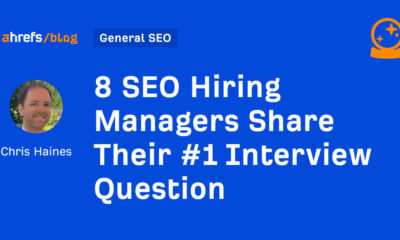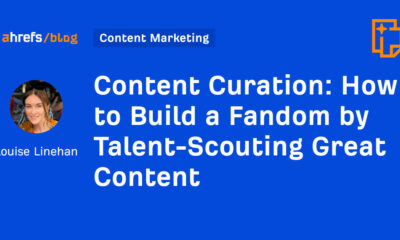MARKETING
To Date or Not To Date? That’s the Wrong Content Question [Rose-Colored Glasses]
Wanna start a fight among content marketers? Ask four content marketers whether blog posts should include the date of publication.
You’ll probably get five or more opinions. Yes, you read that right – at least one of the people you ask will likely have at least two opinions.
There are good arguments on both sides. I see the point made by those who say that you can’t correctly cite any content that isn’t dated. And I understand the argument that says including the date will eventually make your content seem old, even if it’s “evergreen.”
But here’s the thing. A timeless piece of content doesn’t automatically mean the content will stand the test of time. And content that stands the test of time isn’t necessarily timeless.
A timeless piece of #content – one without dates or era-specific references – won’t automatically stand the test of time, says @Robert_Rose via @CMIContent. Click To Tweet
The difference between timeless and classic content
When trying to create evergreen content, content marketers typically avoid including anything that links the piece to the time it was made. They’re trying to create something that will be relevant to the desired audience now and in the future.
This seems like an impossible task. Writing in a particular time imbues context that can’t be removed – you can’t know which details will make your piece seem dated in the future.
But if this is true, how does any content last beyond its own time? How does something become “classic” in the dictionary definition (a work of art of recognized and established value)?
The short answer: Because it turns out that way.
That’s unsatisfying but true. Classic works aren’t classic because the author tried to avoid the context of the time in which they created them. They become classics because the care, depth, and creativity poured into the piece continue to resonate with new audiences.
I love how author Italo Calvino described a “classic” in his essay, Why Read The Classics? He characterizes it as something “which, even when we read it for the first time, gives the sense of rereading something we have read before.” A classic, he says, is “a book which has never exhausted all it has to say to its readers.”
I just finished rereading Basic Marketing – A Managerial Approach, by E. Jerome McCarthy, for the third time. Even if you haven’t heard of the book, you’re probably familiar with one of the concepts it introduced: The “4 Ps” of marketing.
It’s a classic marketing text. But, having read it three times, I can tell you it’s clear this book was written in the 1960s.
Likewise, I believe the LEGO Movie is a perfect example of a modern-day classic. It offers creative storytelling with a very distinct point of view and – unlike most “evergreen” content – trendy, topical characters. Despite that, The LEGO Movie is also something that families can enjoy watching again and again. The movie never exhausts all it has to say to its audience.
It’s a classic that stands the test of time – it has warranted sequels and spinoffs and remains a core piece of the LEGO content strategy.
Can you create classic content marketing?
I once asked some clients (without irony, mind you) if they could envision creating a thought leadership paper that was timeless (meaning evergreen) and classic (meaning something people enjoyed so much they’d read it again and again).
They laughed. But I was completely serious. Can you create a classic thought leadership paper? Is it possible to produce a classic video series on SEO? Can you create a classic Thanksgiving Day turkey recipe?
You probably thought, “Oh, sure,” about the recipe. But didn’t the other two seem odd?
Classic content provides new audiences with value and goes one step further: It provides existing audiences something they can return to time and again.
I continually return to Theodore Levitt’s paper Marketing Myopia to refresh my marketing chops despite its analysis of industries that date it to the 1960s. Dumb Ways To Die, a content marketing effort by the City of Melbourne Australia’s Metro organization, continues to get tens of millions of views every year despite being almost nine years old.
Classic #content provides new audiences with value and gives existing audiences something they can return to time and again, says @Robert_Rose via @CMIContent. Click To Tweet
A formula for content that stands the test of time
You can’t know if a piece of content is a classic until it – well – becomes a classic. It must stand the test of time. And for that, you need time.
But can you increase the chance that your content’s value will last?
You can’t know if a piece of #content is a classic until it stands the test of time. But you can increase the chance its value will last, says @Robert_Rose via @CMIContent. Click To Tweet
I think you can. Whether you are writing for B2B or B2C, fiction or non-fiction, I’ve found that classic content pieces tend to share these traits:
- Memorable, diverse characters or points of view. Every classic story – even Marketing – A Managerial Approach – offers something incredibly memorable. In McCarthy’s book, the 4 Ps concept lasted. What’s the thing people will remember from your content?
- A fully realized setting. Whether you’re writing for B2B or B2C, think about building a world for your audience. Rich detail allows the audience’s minds to connect to other stories they’ve heard and experiences they’ve had (and that’s a mark of a classic).
- A distinctive style. Develop a style (for words and imagery) and stick to it. Be consistent.
- Larger truths. I teach this one in all my storytelling workshops. Every great story should attempt to illuminate a universal truth that will change the reader somehow.
- Nods (and connections) to tradition. Embrace the tradition of what you’re writing about. Find a way to celebrate it or escape from it.
- Structure. Classics follow a story structure. That doesn’t mean they don’t stray from traditional structures (I’m looking at you, Ulysses). But most have a story structure that provides a foundation the audience can follow.
- Ambiguity. Classic content leaves room for audiences to find their own way, come to different conclusions, and interpret the work in ways the author may not have anticipated.
The bottom line? Focus on great storytelling, exploring topics deeply, creating distinct points of view. And don’t shy away from using timely examples to help tell a story. Create content that people will want to revisit again and again.
Then, it doesn’t matter if you put a date on it.
HANDPICKED RELATED CONTENT:
Get Robert’s take on content marketing industry news in just three minutes:
https://www.youtube.com/watch?v=videoseries
Cover image by Joseph Kalinowski/Content Marketing Institute
!function(f,b,e,v,n,t,s)
{if(f.fbq)return;n=f.fbq=function(){n.callMethod?
n.callMethod.apply(n,arguments):n.queue.push(arguments)};
if(!f._fbq)f._fbq=n;n.push=n;n.loaded=!0;n.version=’2.0′;
n.queue=[];t=b.createElement(e);t.async=!0;
t.src=v;s=b.getElementsByTagName(e)[0];
s.parentNode.insertBefore(t,s)}(window, document,’script’,
‘https://connect.facebook.net/en_US/fbevents.js’);
fbq(‘init’, ‘1432232210459613’);
fbq(‘track’, ‘PageView’);



















You must be logged in to post a comment Login